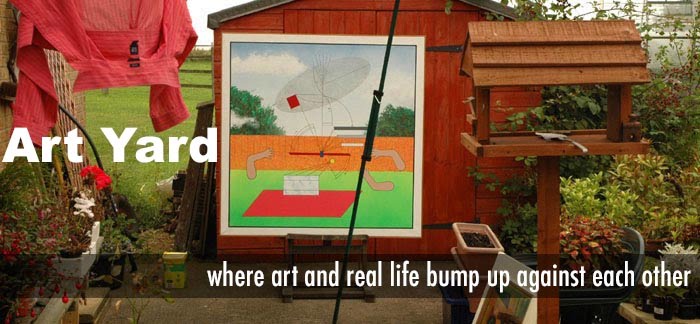
It's always a slightly frustrating pleasure to discover a great exhibition just before it closes. No time for a second look or sharing your discovery with friends.
Visual Arts Scotland's 2009 Annual Open Exhibition at
the City Art Centre was a luxurious warm wallow in the best contemporary art that Scotland has to offer. Sadly, this year's show closed after a six-week run on 19th March. Every 2 and 3-d medium (and style) seemed to be represented in more than 300 artworks displayed over two floors of this beautiful gallery.

I clearly wasn't the only one to fall in love with Kenneth Le Riche's large oil painting,
The Conversation. This detail was used as the front cover design of the catalogue. To the left of this cropped image a shadowy male figure stands outside on a balcony, glimpsed through an open doorway. A well-deserved prizewinner.
Two floors down was the show that brought me here, drawn by my curiosity to see Bob Dylan's
Drawn Blank series of paintings (also ended on 19th March). As the archetypical hero and spokesman of my generation as it grew into maturity, Dylan can still do no wrong. His 2006 album
Modern Times is as hauntingly memorable as any of his earlier work. But with Dylan, there is always the hidden side where man and myth blur - and nothing is quite what it seems.

I have to say I quite like the work. Stylistically, it is
fauve, with loose drawing and flat, vibrant colour. Echoes of Matisse or Dufy.The original drawings are said to have been made when Dylan was on the road and show a world in motion, of short stops and sidewalks, casual acquaintances and cafe tables. There is, in his subjects, none of the sensual intimacy of the original Fauves. Dylan's drawn line is much more fragmentary, angular and broken.

Key to interpreting the work, for me, is understanding that it is a composite of scanned drawings and painted modifications made more than a decade later. Like the mystery of the man himself, it is a subtle layering of reality and fiction.












